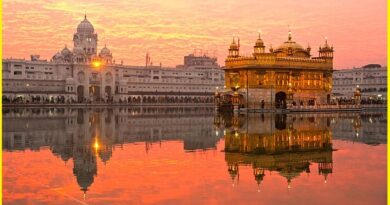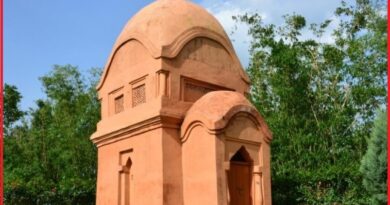Dhosi Hill Haryana- An Extinct Volcanic Crater in Aravalli range
Dhosi Hill Haryana
Dhosi Hill is a hill located in the Mahendragarh district of the state of Haryana in India. It is also known as Dhosi Hill Archeological Site and is considered one of the most important prehistoric sites in India. It is believed to have been inhabited by humans during the Stone Age and has yielded many artefacts such as stone tools, pottery, and animal bones.
The site has also revealed evidence of ancient farming practices and animal domestication, indicating that the inhabitants of the region had a settled way of life. The hill has been excavated by the Archaeological Survey of India, and the findings have shed light on the prehistoric culture and lifestyle of the people who lived there.
The Hill is an important Vedic period site, standing alone at the northwest end of the Aravalli mountain range. Dhosi hill height varies from about 345 to 470 meters from the surrounding lands. At present the hill has temples, a pond, ruins of a fort, caves and forest around it. In the ancient times, as per various scriptures like Mahabharata – Vanparv, Puranas and Shathpath Brahmana the hill had many Ashrams of Vedic time. It is among the most ancient Vedic religious sites in Haryana located on the route Saraswati river.

Location
Dhosi Hill is located on the borders of the Indian states of Haryana and Rajasthan. The Haryana portion lies in Mahendragarh district to the south, 5 kilometres from Narnaul; the Rajasthan portion lies in Jhunjhunu district to the north. The hill is a remnants of an extinct volcano, has a perfect volcanic hill with distinct crater, lava still lying on it and giving a perfect conical view from top.
Dhosi Hill history
The Hill, also known as Dhosi Hill Aravalli Range considered to be one of the highest points in the Aravalli Range, which is a mountain range that stretches across the northwestern part of India. The Hill has a rich history and cultural significance. The hill is home to several ancient temples and rock paintings that date back to the Neolithic and Mesolithic periods. These temples and rock paintings are a testament to the rich cultural heritage of the region.
Over the years, Dhosi Hill has also been the site of several archaeological excavations, which have uncovered evidence of ancient civilizations that once inhabited the area. The hill is now a popular tourist destination, attracting visitors from all over the world who come to explore its ancient temples, rock paintings, and rich cultural history.

Dhosi hill fort
Dhosi Hill has remnants of a fort built by Ganga Singh Nuniwal. There are thick walls, up to 7.6 m high and 12 m wide on even the steepest slopes and the top of the volcano. The fort was constructed to safeguard the heritage and ashrams on the hill from attacks by Muslim invaders during the medieval period. To replace the old temple, a fort modeled on the temple of Chyavana was built at the crater of the hill in the 1890s by the Bhargava community.
The Hill is located in the state of Haryana in northern India. It is situated near the village of Dhosi, which is approximately 15 kilometers from the town of Narnaul and 120 kilometers from the national capital, New Delhi.
Also read- Tosham Hills Range-Ramnants of an extinct volcano and a Popular Hill Station
How to get the Hill
There are several ways to get to Dhosi Hill. The nearest airport to Dhosi Hill is Indira Gandhi International Airport in Delhi, which is located approximately 130 kilometers away. From the airport, one can hire a taxi or take a bus to reach the Hill. The nearest railway station to Dhosi Hill is Narnaul Railway Station, which is located on the Delhi-Rewari-Jaipur railway line. The Hill is well connected by road. One can take a bus or hire a taxi from Narnaul or nearby towns to reach Dhosi village, from where the hill is easily accessible.



